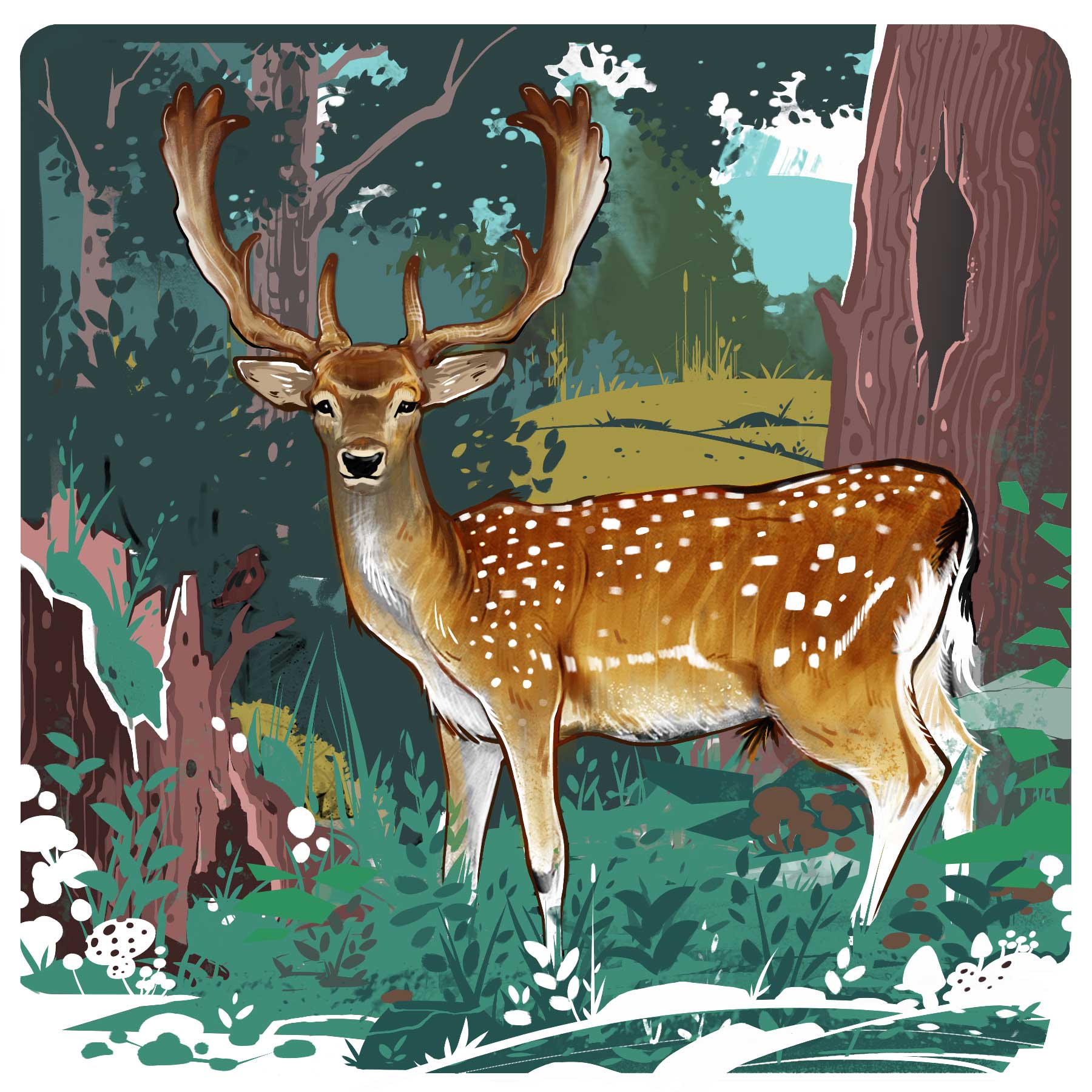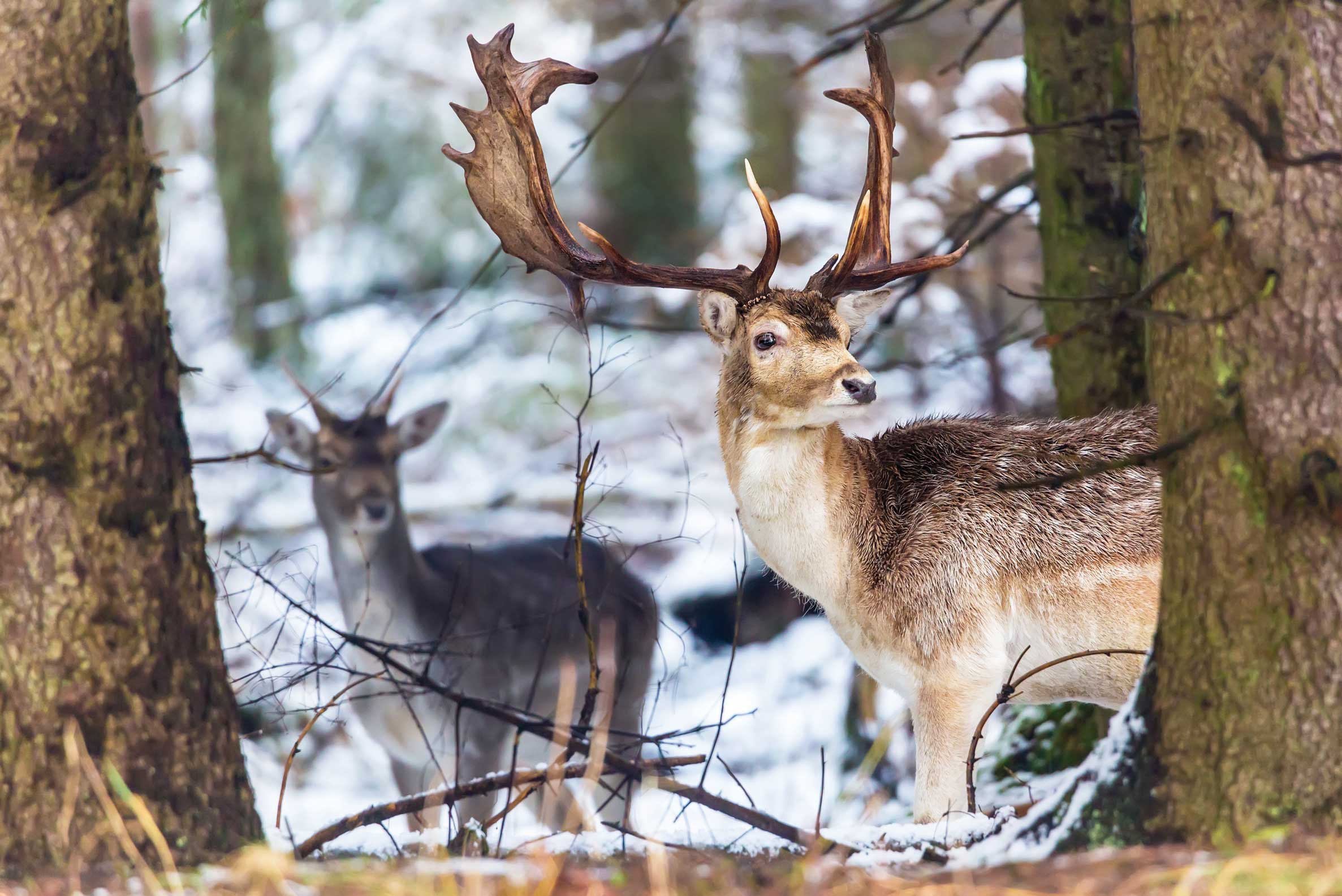BC hunters are fortunate to have two species of deer to hunt, mule deer (black-tailed) and white-tailed deer, at least one of which can be found throughout the province, from the US border to the Yukon. However, in a small part of southwestern BC, there is a hunting season for a third species, fallow deer (Dama dama). These animals are native to southeastern Europe and the Middle East, but they were introduced into many places around the globe to provide sport, meat and trophies.
Advertisement

Fallow deer are a medium-sized ungulate, a bit smaller than a white-tailed deer, that look like they were assembled from components of a fawn, a generic adult deer and a bull moose. There is a great variety in fallow deer coat colours, but the most typical is a pale brown body. Fawns have white spots on their backs, similar to other deer species, but a unique feature of fallow deer is that the adults also have lines of white spots on their backs. The heart-shaped white rump patch is outlined in black and the narrow tail has a black stripe down the middle. However, some fallow deer have a dark brown, almost black coat and there are colour phases between the two extremes.
Like all members of the deer (Cervidae) family, fallow deer bucks have deciduous antlers. Young bucks have spikes, but adult bucks have antlers that are almost moose like and can be very impressive relative to the size of the animal. From the skull, the first half of the antler length is basically cylindrical, but the upper half flares into broad, flat palms, gradually widening at the top. Antlers are important in all deer societies, and young bucks, although keen to mate, do not often get a chance when competing against the dominant bucks with more impressive headgear.
Advertisement
The bucks and does generally live in separate groups for most of the year, but they come together in October to breed. The bucks often participate in “lekking” behaviour, in which several will gather at dawn and dusk in an open area of the forest and each establishes a tiny territory a few metres in diameter. To defend their territory and attract does, mating rituals include strutting, head bobbing to show off their antlers, spraying themselves with urine and making a call that sounds like a groaning belch. The does are attracted to it all. The bucks are polygamous, and one will mate with as many does as he can lure to his tiny patch of the lek. Gestation lasts through the winter and fawns are born in late May. Does usually bear a single fawn, twins are uncommon. The doe keeps her fawn hidden for several weeks and then the pair joins a nursery group for the summer. Fallow deer are mostly nocturnal, spending their days in the forest, coming out to open ground to feed at dawn and dusk.

In BC in 1908, fallow deer were introduced to a private estate on James Island, not far from Victoria. These deer are good swimmers, and from James Island they colonized nearby Sidney Island, where the largest population currently lives. In the 1930s, these deer were introduced to other Gulf Islands and to parts of Vancouver Island, such as the Alberni Valley, but few of these releases succeeded. More recently, fallow deer have been farmed for meat and antlers in various parts of the province. On the Gulf Islands, with habitat somewhat similar to their home range in Europe and Asia, fallow deer proliferated. With no natural predators, their populations grew to displace native wildlife and overwhelm the fragile Gulf Island habitats. Some populations are overcrowded to the point of starvation. To reduce animal suffering and rescue the habitat, culling has been the main method of fallow deer population control. However, a hunting season is now open in parts of region 1 for either sex fallow deer, with no species licence required, no closed season and no bag limit. The current fallow deer populations are almost exclusively on private land and hunting is with permission only. The open season includes parts of southern Vancouver Island to allow hunters to take any fallow deer escapees from game farms in order to reduce the likelihood of these deer becoming established on Crown land.
Advertisement
So, while there is now a hunting season for a third deer species, it is unlikely that many hunters will harvest venison other than mule deer and white-tailed deer any time soon.